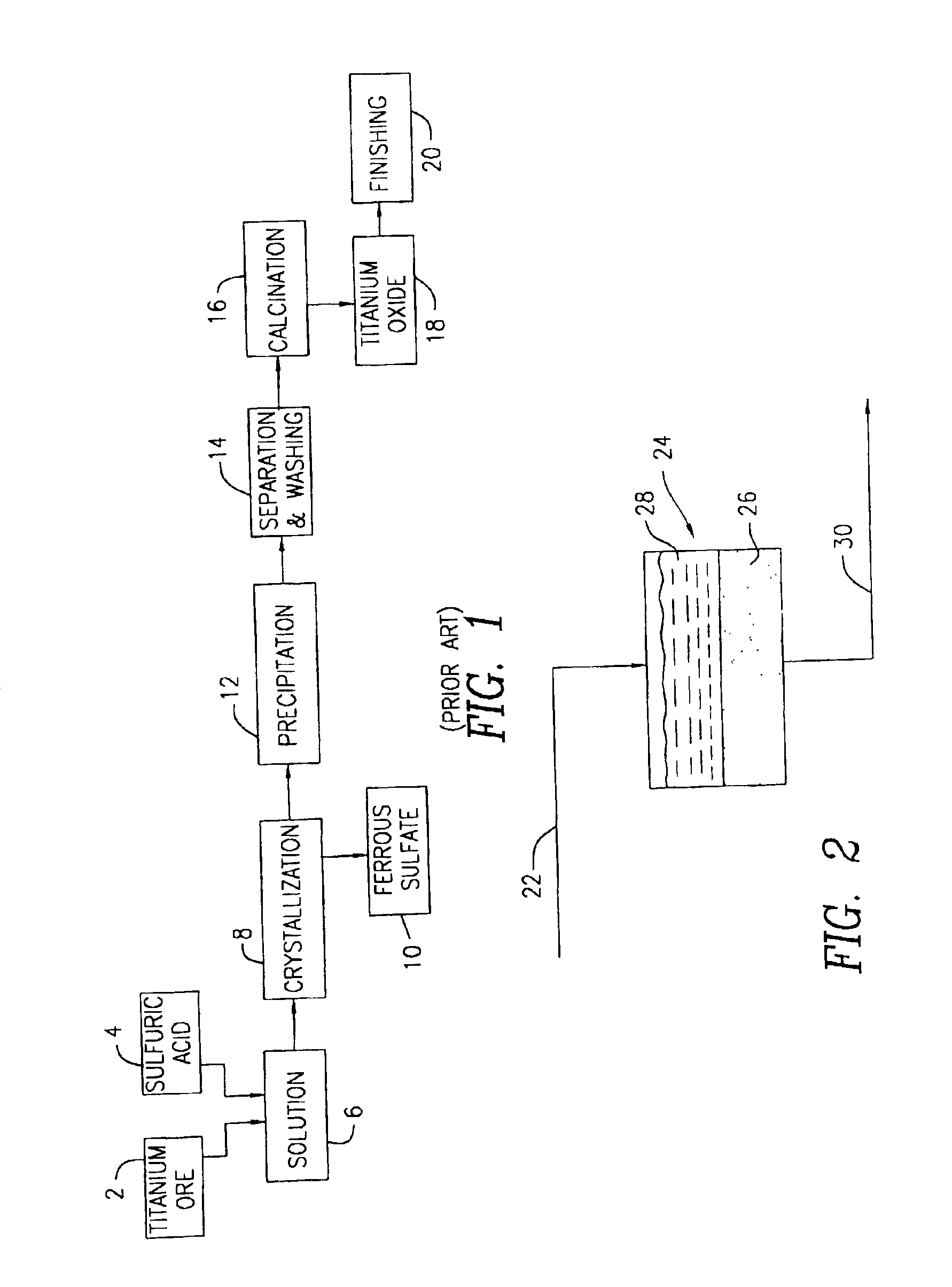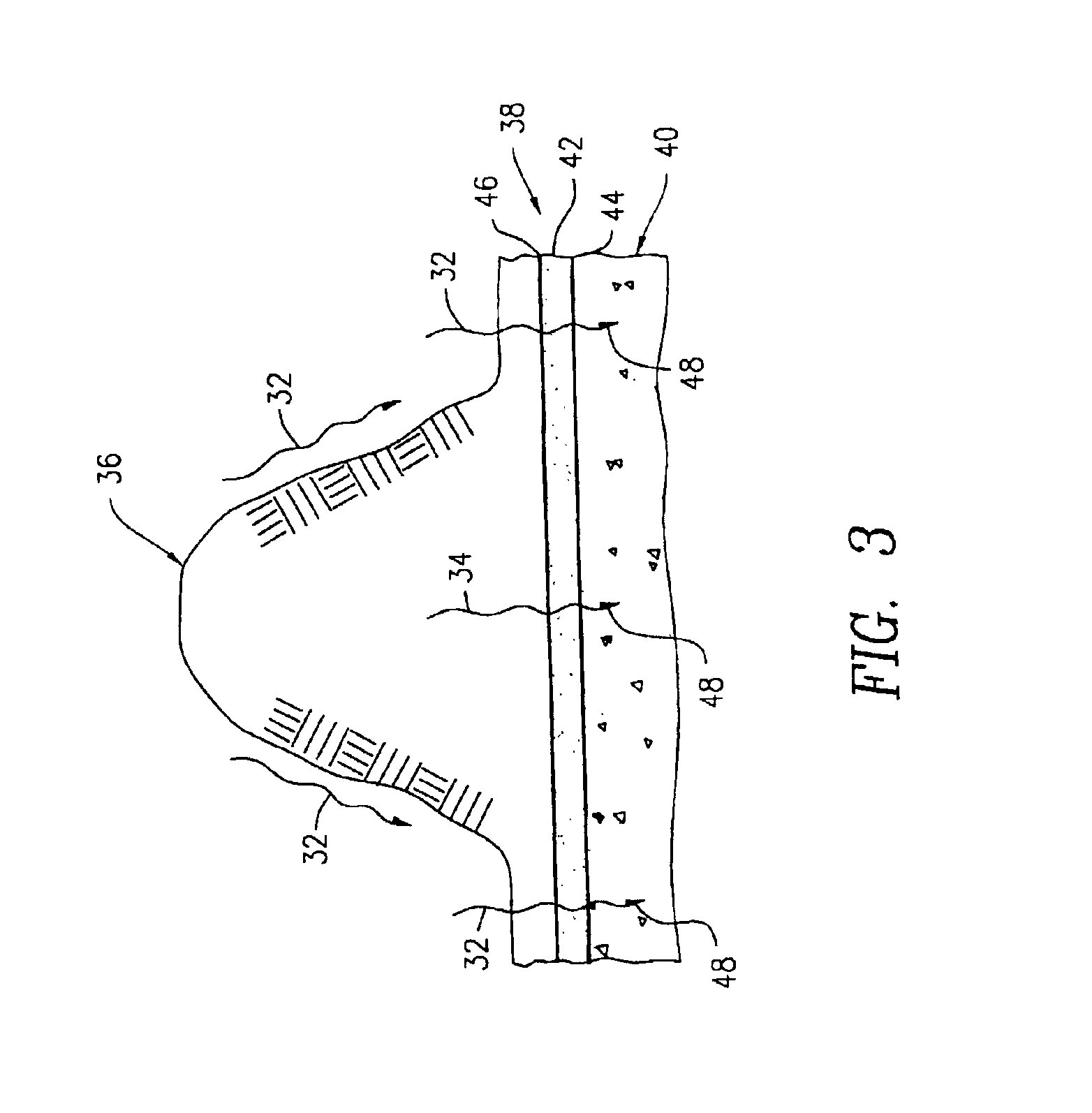Methods of preparing a surface-activated titanium oxide product and of using same in water treatment processes
a technology of surface-activated titanium oxide and water treatment process, which is applied in the direction of separation process, radioactive contaminants, other chemical processes, etc., can solve the problems of increasing the cost of building and operating such a system, ineffective removal of some regulated substances to the mandated level, and inability to meet the requirements of the mandated level of removal, so as to prevent the dissolution or migration
- Summary
- Abstract
- Description
- Claims
- Application Information
AI Technical Summary
Benefits of technology
Problems solved by technology
Method used
Image
Examples
example 1
Preparation and Characterization of a Surface-activated Titanium Oxide Product
[0050]A powdered surface-activated titanium oxide product was prepared from a titanium oxide intermediate obtained from a commercial sulfate process used primarily to produce titanium dioxide pigments. The titanium oxide intermediate was collected as an acidic slurry after a separation and washing stage 14, but before a calcination stage 16 (see FIG. 1). The pH of the slurry was adjusted to a pH between 4 and 9 with sodium hydroxide, and the slurry was filtered to collect the titanium oxide solids. The titanium oxide solids were washed with water to remove salts, then dried at a selected temperature between about 105° C. and about 700° C. for about 2 hours. Samples of the dried titanium oxide product were powdered and sieved to obtain a 100-standard U.S. mesh fraction (i.e., a fraction having a mean particle diameter of about 150 μm).
[0051]Step-scanned X-ray powder diffraction data for the powdered samples...
example 2
Porosity and Surface Characteristics of Nano-crystalline Anatase
[0058]A sample of powdered nano-crystalline anatase was prepared according to the method of Example 1 and dried at a temperature of 105° C. The BET specific surface area and the porosity of the sample were determined by a static volumetric gas adsorption technique. Measurements were taken using a gas-absorption / desorption analyzer (trademark: ASAP 2010, Micromeritics, Norcross, Ga.). A sample tube containing the sample of nano-crystalline anatase was cooled in liquid nitrogen and evacuated to degas the sample. Measured amounts of nitrogen gas were then introduced and the amount of nitrogen adsorbed by the nano-crystalline anatase was determined at a series of defined pressures. The resulting data, i.e., curves of the volume of nitrogen adsorbed vs. the relative nitrogen pressure, were reduced using the BET equation to determine the BET specific surface area of the sample and using the BJH method to determine pore size d...
example 3
Batch Adsorption of Dissolved Metals from Aqueous Solutions
[0060]A powdered nano-crystalline anatase product was prepared according to the method of Example 1 using a drying temperature of 105° C. Aqueous samples of dissolved metals, or of the oxyanions arsenate (As(V)) and arsenite (As(III)), were prepared for testing by dissolving salts of the selected substances in tap water to the initial concentrations shown in Table 1, and adjusting the samples to a neutral pH. Batch experiments were conducted by adding the nano-crystalline anatase product to each aqueous sample, to obtain the titanium oxide content shown in Table I, and suspending the nano-crystalline anatase product in the aqueous sample by mixing for about one hour. The results in Table I show that the nano-crystalline anatase product removes a large percentage of each metal from the respective aqueous solutions in a relatively short time, i.e., one hour or less. The high degree of arsenite (As(III)) removal is particularly...
PUM
| Property | Measurement | Unit |
|---|---|---|
| temperature | aaaaa | aaaaa |
| temperature | aaaaa | aaaaa |
| temperature | aaaaa | aaaaa |
Abstract
Description
Claims
Application Information
 Login to View More
Login to View More - R&D
- Intellectual Property
- Life Sciences
- Materials
- Tech Scout
- Unparalleled Data Quality
- Higher Quality Content
- 60% Fewer Hallucinations
Browse by: Latest US Patents, China's latest patents, Technical Efficacy Thesaurus, Application Domain, Technology Topic, Popular Technical Reports.
© 2025 PatSnap. All rights reserved.Legal|Privacy policy|Modern Slavery Act Transparency Statement|Sitemap|About US| Contact US: help@patsnap.com



